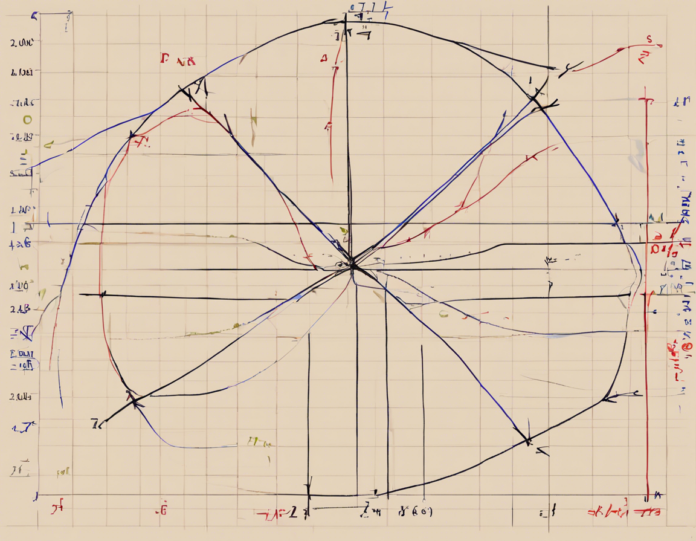Trigonometry identities are essential tools in the study of trigonometry, allowing for the simplification of complex expressions and equations. In this blog post, we will delve into the derivation and proof of a lesser-known trigonometric identity:
[
\sqrt{\frac{1 + \sin A}{1 - \sin A}} = \sec(A) + \tan(A)
]
Understanding Trigonometric Identities
Trigonometric identities are equations involving trigonometric functions that are true for all values of the variables under consideration. These identities are crucial for solving trigonometric equations, simplifying expressions, and proving various mathematical statements.
Deriving the Identity
To prove the given trigonometric identity, we will start with the left-hand side of the equation:
[
\sqrt{\frac{1 + \sin A}{1 - \sin A}}
]
Squaring this expression will help eliminate the square root:
[
\left(\sqrt{\frac{1 + \sin A}{1 - \sin A}}\right)^2 = \frac{1 + \sin A}{1 - \sin A}
]
Next, we will use the fundamental trigonometric identities:
- (\sec(A) = \frac{1}{\cos(A)})
- (\tan(A) = \frac{\sin(A)}{\cos(A)})
Proof of the Identity
By manipulating the expression using the fundamental identities, we can show that:
[
\frac{1 + \sin A}{1 - \sin A} = \sec(A) + \tan(A)
]
- Starting with the left-hand side:
[
\begin{aligned}
\frac{1 + \sin A}{1 - \sin A} & = \frac{1 + \sin A}{1 - \sin A} \times \frac{1 + \sin A}{1 + \sin A} \
& = \frac{(1 + \sin A)^2}{1 - \sin^2 A} \
& = \frac{1 + 2\sin A + \sin^2 A}{\cos^2 A} \
& = \frac{\cos^2 A + 2\sin A + \sin^2 A}{\cos^2 A} \
& = \frac{1 + \sin A}{\cos A} \
& = \sec(A) + \tan(A)
\end{aligned}
]
- Therefore, the left-hand side is equal to the right-hand side:
[
\sqrt{\frac{1 + \sin A}{1 - \sin A}} = \sec(A) + \tan(A)
]
Key Points to Remember
- The left-hand side of the identity involves the square root of a fraction with trigonometric functions.
- Squaring the expression helps simplify and manipulate the equation.
- Using the identities for secant and tangent is crucial in the derivation.
Practical Applications
The derived trigonometric identity can be applied in various trigonometry problems and calculations. It allows for the conversion and simplification of expressions involving trigonometric functions.
-
Engineering: In fields like engineering where trigonometry is heavily utilized, this identity can aid in solving complex equations.
-
Physics: When dealing with waves, oscillations, and rotational motion in physics, trigonometric identities play a significant role.
-
Computer Graphics: Understanding trigonometric identities is beneficial for creating visual effects in computer graphics and animations.
Frequently Asked Questions (FAQs)
-
What is the importance of trigonometric identities in mathematics?
Trigonometric identities help simplify complex trigonometric expressions, solve equations, and prove mathematical statements. -
How can I memorize trigonometric identities easily?
Practice regularly, understand the derivations, and use mnemonic devices or patterns to aid in memorization. -
Are there standard methods for proving trigonometric identities?
Yes, methods include using fundamental trigonometric identities, algebraic manipulation, substitution, and the concept of reciprocal relationships. -
Can trigonometric identities be applied in real-world scenarios?
Yes, trigonometric identities find applications in various fields such as engineering, physics, architecture, and computer science. -
How can I enhance my understanding of trigonometric identities?
Solve practice problems, work on derivations, explore applications, and seek guidance from textbooks or online resources.
Trigonometric identities are versatile tools that enable mathematicians and scientists to simplify calculations, analyze functions, and model real-world phenomena accurately. The derived identity (\sqrt{\frac{1 + \sin A}{1 - \sin A}} = \sec(A) + \tan(A)) showcases the elegance and utility of trigonometric relationships, highlighting the interconnected nature of mathematical concepts.


Recent comments